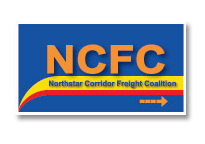MVFC Recommendations for Reauthorization
Tue, 07/06/2010Mississippi Valley Freight Coalition has posted simple, straight forward recommendations, nicely displayed in a set of one pagers at the MVFC updated web site. MVFC recommendations on "Freight Funding Programs" are right on target; but, by failing to address competition issues, we think MVFC's recommendations on "Rail Transportation" fall seriously short of the mark.
MVFC's and CCFC's perspectives essentially coincide geographically. This "region contains 22 percent of the nation's population but 31 percent of manufacturing GDP" and is the "freight crossroads" of the Nation. Hence, "Central Corridors."
We agree that the essential conditions for the new or next funding authorization are that new program funding is equitable and the selection criteria for projects of national significance are reasonable and transparent. MVFC articulates this objective in four specific recommendations:
- Insist upon transparent and public processes for developing and applying apportionment and project selection criteria.
- Insist that apportionment and project selection criteria focus on freight-specific factors and on all of the freight transportation modes.
- Support a project selection process that considers the importance and competitive position of the industry supported by the project.
- Support a project selectionprocess that assigns greater weight to industries that create jobs in the U.S.
On "Rail Trransportation," MVFC recommends taking an active role in "creating a national rail policy" but neglects to mention competition. We think truly "giving competition a chance," in contrast to the result of the Staggers Act of 1980, will be at the core of any effective national rail policy.
By "competition," we do not mean rail-to-rail only, though that is certainly desirable. We also mean, particularly, policies that promote true competition for market share against "all highway" that is door-to-door, whether or not the freight moves all rail or in transparent intermodal cooperation. That contemplates our Class1s doing something more than merely selectively competing for long haul, volume and bulk freight, in high density corridors. "Giving competition a chance" means re-empowering regionals and short lines with the competitive tools necessary for them to effectively compete for freight moving between and over their lines, to or from all origins and destinations.



